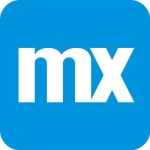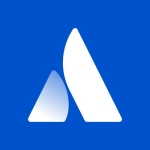What is our primary use case?
Everything that I've done over the last six years with ServiceNow has been for hospital systems. It was used at different levels for different clients. Many times, it was being used by the whole organization, but my involvement has always been for the department projects. There was significant effort into reporting and dashboards and some automation for approvals. I am currently using its latest version.
How has it helped my organization?
Visibility and resource management are the two areas that are improved by the ServiceNow Project Management implementation. The Project Management module provides visibility to leadership. We are able to get accurate dashboards and, more importantly, proper resource management. A lot of this isn't necessarily ServiceNow functionality. It is also a matter of implementation and adoption process.
Before ServiceNow, in the environments I've been worked with, there were a bunch of files, such as Microsoft Project plans or Excel spreadsheets, all over the place, and very rarely anybody had a clear understanding of where we were in the project. By the time they had an understanding, the document used to become dated.
What is most valuable?
Being able to have the required information for project management is valuable. I've got multiple people accessing it, and I'm tracking tasks with percentages done. It allows me to have detailed notes and provides the ability to attach documents. I have used a lot of project management solutions, and there were gaps in terms of what was available. ServiceNow has got all the features and functionalities.
It is a solid solution. It is also easy to get into and use. It is certainly highly scalable.
What needs improvement?
The reporting, which also includes dashboards, needs to be improved. Both dashboards and reporting require subject matter experts. A lot of end-user configuration and functionality comes with ServiceNow and it is not bad, but when I want to do something slightly more sophisticated, I've got to get a ServiceNow subject matter expert to get those dashboards all set up. One of the big reasons why that's so difficult is that ServiceNow is effectively a whole bunch of databases, and almost every module is fundamentally a database, so pulling information from multiple modules is painful. The key thing here is the Time Tracking piece, which is rather important because that's what helps you automate the percentage done inline. Getting a report that shows combined information from Time Tracking and Project Management into a single view is difficult.
There should be the ability to turn on and off portions of Project Management. I'm not asking them to do a finance portion of Project Management through the interface. Currently, there are hundreds of fields that project managers are looking at and trying to decide whether they should fill them out or not. Being able to configure the user interface without a subject matter expert would be really great.
When you want to get a little more value out of the product and pull data from multiple modules and do something that isn't built-in and is a user-configurable thing, it gets ugly. Currently, as soon as you install the new version, you've got to go back there and make all those tweaks. There should be just a configuration file that goes to the new version. When a new release comes out and I've tweaked it, I shouldn't have to go back and manually tweak everything again.
When we look at ITSM pieces, there is a knowledge base that works really well. I feel that the Project Management module does not leverage the knowledge base the way it should. I don't think it needs to be a separate knowledge base. There should be links. Currently, if I am configuring a project and looking at a particular tab or field, and I want to know more details about that, there is no simple way other than to go into the knowledge base and do a search. There is no simple way for me to just click and see the approved knowledge base article about that particular tab or field.
There is no built-in ability to get to these articles, and the customer would have to build it. All the stuff is in the knowledge base, but I am constantly required to go and do a search and find it. After that, I have to try and figure out if this is the approved one. Most knowledge bases are designed so that your end users can submit articles, at least successful ones. You've got to get the subject matter expertise into the knowledge articles, and there is a clear delineation between the ones that are approved versus the ones that work right. I want both types of articles in there, but I want to be able to delineate which ones are the approved ones and tie them in Project Management. This functionality is already there in some other areas, but it is not there in Project Management. Not being able to link that knowledge base in a more fluid way is a big miss because it just makes adoption much harder.
Resource management should be easier. This is an area where I would love to see an improvement. The nature of ServiceNow is that it tends to be a bunch of fields. It is a bit like an Excel spreadsheet. You're in a software interface, but you've got a bunch of rows and columns. Other than dashboards, there are a lot of rows and columns views that often do not help you to easily see and manage resources. More graphical and more click-and-drag ability around resource management would be really good. The data is in there, and you can run dashboards, reports, and stuff like that, and very often, get the information in a somewhat consumable view. However, it tends to have frozen columns. It would be amazing if they can make resource management a little bit more graphical. There are other solutions that I've seen where resource management was a more visual experience.
For how long have I used the solution?
I have been using this solution for six years.
What do I think about the stability of the solution?
From a perspective of it working, there are bugs occasionally, but for the most part, it is very solid. There are always pockets of problems, but when it comes to Project Management, I am yet to see a significant bug or issue. Most of the bugs and issues are more related to a lack of functionality as opposed to something that is broken or bad data. All such functionalities get added in the next version.
From the perspective of doing what it is supposed to do, it is very solid. My experience has been very good, especially with the most recent release.
What do I think about the scalability of the solution?
It is highly scalable. Once you get over the initial pricing shock, you can have multiple people in there, and you can scale quickly and easily. It is one of those things where you get a better price for more people and most subscription licenses. Technically, it can scale up, but it starts getting expensive.
In the current environment, they have licenses for 180 people who are actively using the Project Management module. They have 30,000 end users, and their users have view-only access to Project Management. Once it is stable, and they are completely comfortable with it, which may be a year or longer, they might potentially expand it to the entire environment. They have 30,000 people in the US, and they also have health systems in South America. So, the total number of users could be between 50,000 to 60,000. Going to South America would probably be two to three years out.
How are customer service and technical support?
I've got a lot of experience with ServiceNow outside of the Project Management module. Focusing just on the Project Management module, my experiences have been very good. ServiceNow, at least for this particular module, has been smart and only tends to let you get on the phone with somebody who really knows the product. There are not that many support calls typically, and they tend to be just the technical staff that are supporting the module. While you can have end-user support, I've not worked with many customers who buy the support for the Project Management module for anybody who is not actively using it as a project manager, and even those project managers usually rely on the core administrator team. They'll tell them what the problem is, and that core team will call support.
When I've been on the calls with support, which I have done on a regular basis over the last couple of years and certainly with this current customer, I've been very pleased with their knowledge. These are highly technical calls, and it is not what I would call typical support. It is definitely the third-tier support that we are calling and getting, and my experience has been extremely good for the Project Management module.
Which solution did I use previously and why did I switch?
I've definitely used over 20 project management solutions, but they can't be compared with ServiceNow. Some of them were homegrown, and some of them were built into the electronic medical record solution that was there.
The current customer I'm working for didn't make a switch. They had made that decision and gone to ServiceNow four years ago. They adopted Project Management probably two years ago. It seemed very logical to go ahead and switch over to ServiceNow Project Management because people were already logging into ServiceNow. About a year ago, in fact, right about the time when COVID hit us, they actually finished the implementation. There have been some hits and misses because the staff resigned and things like that.
Other customers that I've worked for had either Microsoft Project files or Excel spreadsheets. Many times, they also had a web-based project management solution that literally was a task list with a percent complete and literally four fields per task, and those would be stacked in. A lot of these were more team management solutions such as Microsoft Office 365. None of them is a competitor to what you get from ServiceNow.
How was the initial setup?
It is overly complex mainly because it has a lot of content. There are some out-of-the-box configurations, and there is also a lot of content that is not configurable out of the box. Of course, most organizations aren't mature enough to use the additional content and additional tabs. Typically, the implementers are smart enough to deal with that, but I've worked with customers that weren't smart enough to go ahead and say, "Hey, we need a subject matter expert to come in and install this module." Sometimes, they brought somebody in to do just the bare bone install, and then they wanted to configure it themselves.
You need a subject matter expert. ServiceNow doesn't always do it, and very often, it is third parties who implement it, but they don't do a great job of educating their customer on what they should and shouldn't do as their initial install. They just say here is the tool to some extent. You should ideally go for subject matter experts that are either recommended by ServiceNow or are directly from ServiceNow. Of course, it gets more expensive as you go up that chain.
ServiceNow could do a better job of prepping their coordinators and supporting this process. It is tough because most of the customers first need training on project management in general before you start teaching them how to use the tool. There is no lack of support. It is just not well-organized and prioritized support. There is a knowledge article for everything from ServiceNow, and all the information is there, but it is not organized in a way, especially for a new user, to say that don't worry about this. We'll get to this later. Here are the things you should worry about, and here are the things that you really should do as best practice. That's the key.
I have been advising and working with implementation teams over the last three years. Every single time, after they implemented and started using it, they started to discover things that they wish they'd known beforehand. That's why it would be good to have an organized set of best practices from ServiceNow saying, "Hey, you're implementing. This is new. You don't have a mature organization that has a bunch of requirements. So, here are the minimum out-of-the-box things that you should enable. We're also going to hide all that stuff that you don't need, and we're going to get these fundamentals working." Guided and organized best practices for organizations that are new to project management would be a huge win for ServiceNow.
It is a cloud product, so it requires just configuration from us. Typically, implementation takes two to three months, which includes all the beforehand and after closeout. You have some meetings, make some agreements, install the product, and get it up and running. Installation would take just two to three weeks, and the implementation would take two to three months because you've got to do training and everything else to truly get it in there. Most organizations also end up having to come back and do remediation that takes an additional three to six months. We're not talking about the setup where everybody is working on it. We're talking about a setup where you've got a small team that is typically working on the issues, coming up with solutions, and then implementing them later. There is usually a three-month to six-month clean-up afterward. It's not uncommon for me to see close to a full year from the first conversation to when they feel like they've got stable, usable, and good reporting coming out of the solution.
What about the implementation team?
It was a company recommended by ServiceNow. ServiceNow has got a top-six list, and this was number two on their list. In terms of knowledge and the ability to solve problems, they were very good. Because there are no organized best practices and things like that from ServiceNow to help customers in avoiding mistakes, I've not seen an implementor that does it properly. I am constantly trying to help, but, of course, you also typically have that executive that just wants to get it slammed in. This is because they think that with the tools in place, things will suddenly get better. However, good technology rarely results in good results. You've got to have adoption in order to have good results.
While I'm certainly complaining about some deficiencies, I have been very pleased with this implementor's ability to come in, implement, explain, tweak, and get things right. I have been very pleased with what they do. Deficiencies are more typical of all of the implementers, including ServiceNow.
In terms of maintenance, I have not worked too closely with the PMO staff that does that, but as I understand it, they've got four people. Two are directly involved, and two are more along the lines of training and support. There are really four roles for them. There is one role of subject matter experts who are constantly looking at what functionality is in use and for which functionality they want to start adopting. They look at what can we do with the Project Management tool. They also create a lot of dashboards and reports. The end-user functionality is very powerful, but when you want a dashboard that starts grabbing things from multiple places, it is not easy. They spend a fair amount of time doing that kind of work. They also provide support and spend a fair amount of time troubleshooting the data, which isn't because the product isn't working correctly. It is because the users aren't correctly using it. They also simply look at the data for management. They kind of audit the data to see that what we know and what we're hearing in the status update meetings matches what's in the tool. When it doesn't match, they audit the content and figure out whether there is a problem. All four of them probably spend at least 30% or 40% of their time doing that audit process, sitting in meetings, hearing what's going on, looking at the status reports, matching those up with what's in the tool, and making sure that it matches.
What was our ROI?
That's a tough call. I would say yes, but I don't think that many of the customers are calculating or tracking that sort of thing. From my perspective, when we say the return on investment, a lot of times we're talking about hard dollars and being able to readily show that my expenses were reduced. The return on investment for most of the project management solutions is improved performance in project management, and therefore, it is a bit of a soft cost saving because of the improved efficiency and ability to deliver projects. That's usually where ROI is seen, and it is tough to make that a metric.
What's my experience with pricing, setup cost, and licensing?
I'm not aware of any additional costs. I'm pretty sure that the current client is paying just the licensing fee per user. I do know that they've got some support agreement with ServiceNow, but I don't think that is broken out or specific to Project Management. It is just inclusive.
What other advice do I have?
I certainly would recommend it on a regular basis as a viable scalable project management solution. It is a solid solution. It has got all the features and functionalities I want. The lack of visualization of data, ease of implementation, and ease of configuration results in difficulty in training people, and it needs to be more visual and a little bit easier to configure and maintain. Currently, as soon as you install the new version, you've got to go back there and make all those tweaks. It is not all or nothing sort of thing. It is just a case of how much of the functionality done in a manual way has to be redone in each update. That could change over time. They're constantly improving how this works, but in my experience, that was very much the case for the last two upgrades that I've done. Occasionally, I've had problems where existing data from a prior version did not migrate. There is some wonkiness, and you got to go in and clean things up a little bit, but it is pretty minor. It is one of those things where when you've got a solution like ServiceNow that every single person in the organization is using, and you do the update the next morning and realize that none of your reports are right because you've tweaked it, and now, you have to go and fix it. In fairness, if you only use it out of the box the way ServiceNow says you should use Project Management, it probably wouldn't be an issue, but I am yet to see a customer use ServiceNow Project Management out of the box with no changes.
Comparing it to all other project management solutions without consideration of cost, I would rate ServiceNow a seven out of ten.
Which deployment model are you using for this solution?
Public Cloud
Disclosure: My company does not have a business relationship with this vendor other than being a customer.



















